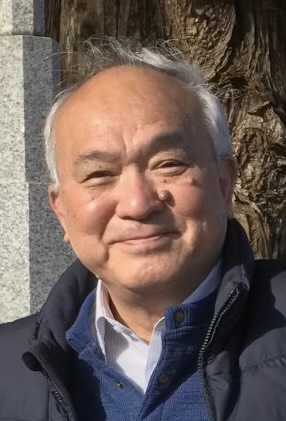Education
Ichiro was born on January 6, 1953 in the fishing community of Usuki in Kyusyu, Japan, and grew up until high school. He enjoyed fishing life in the nearby coastal sea on the basis of the lunar calendar. Detailed education is as follows after the graduation of Usuki High School.
1977 B.S. Department of Fisheries, Faculty of Agriculture, Kyoto Univeristy
1979 M.S. Department of Fisheries, Graduate School of Agriculture, Kyoto University
1989 Doctor of Agricultural Science, Kyoto University (Paper Doctor)
Professional Career
1980 – 1990 Researcher, Nansei National Fisheries Research Institute, Fisheries Agency
1990 – 1994 Laboratory Chief, Nansei National Fisheries Research Institute, Fisheries Agency
1994 – 2009 Associate Professor, Graduate School of Agriculture, Kyoto University
2009 – 2018 Professor, Graduate School of Fisheries Sciences, Hokkaido University
2018 – Present Professor Emeritus, Hokkaido University
Honours
1992 Achievement Award for Young Scientist in Fisheries Science, The Japanese Society of Fisheries Science
2017 The Japanese Society of Fisheries Science Award, The Japanese Society of Fisheries Science
2017 Marine Biology Contribution Award, The 3rd Asian Marine Biology Symposium
2021 Academic Award, The Japanese Society of Phycology
2023 Yasumoto Lifetime Achievement Award, International Society for the Study of Harmful Algae
2023 Harmful Algal Bloom Trail Blazers, International Society for the Study of Harmful Algae
Key HAB Contributions
Ichiro Imai has dedicated over 40 years to research on harmful algal blooms (HABs). Initially, his work focused on understanding and predicting the mechanisms behind red tide occurrences. In the later stages of his career, his attention shifted to developing prevention strategies. His primary objective was to create scientifically sound control methods to reduce the hardships faced by fishermen. As one of Japan's leading HAB scientists, Ichiro Imai has made significant contributions, including serving as an advisor to the Fisheries Agency on red tide countermeasures.
Internationally, he contributed to the advancement of Pacific HAB research as a committee member of the HAB section of the North Pacific Marine Science Organization (PICES) from 2000 to 2019. He also serves as a Council member of the International Society for the Study of Harmful Algae (ISSHA). In November 2023, he chaired the 20th International Conference on Harmful Algae (ICHA) in Hiroshima.
Some of his major contributions to HAB research include:
- Elucidation of the Overwintering Mechanism of Chattonella: For many years, the overwintering process of the red tide raphidophyte Chattonella was unknown. Through his groundbreaking research, Ichiro discovered the existence of resting cysts in the bottom sediments of Japan’s Seto Inland Sea and successfully produced and germinated them in laboratory conditions after years of effort. Along with Dr. Mineo Yamaguchi, he clarified the life cycle of Chattonella, which involves cyst formation at the end of summer red tides, a period of dormancy in winter, and subsequent germination in spring under favorable conditions. This discovery showed that monitoring bottom water temperatures in early summer can predict red tide outbreaks initiated by cysts.
- Discoveries Related to Heterosigma akashiwo: Ichiro also discovered the resting cysts of the raphidophyte Heterosigma akashiwo, an important HAB species found in temperate waters worldwide. He further elucidated the mechanisms of bloom development, including the processes of overwintering and bloom initiation.
- Studies on Diatom Resting Stage Cells: Ichiro expanded his research to the distribution and ecophysiology of diatom resting stage cells, documenting their abundance in surface sediments and mapping their distribution in Japanese coastal waters. His studies highlighted the critical role of light in the germination process. He was also the first to document high densities of diatom resting stage cells in the bottom sediments of not only Japan’s coastal waters but also in regions like the Bering Sea and the Arctic Ocean. These findings represent a significant advancement in understanding the population dynamics and community variation of microalgae.
- Control of Red Tides Through Diatom Growth Stimulation: Despite Chattonella spp. having poor growth rates compared to diatoms, they can form red tides when diatom populations are low. Ichiro demonstrated that diatoms could be rejuvenated and stimulated to rapid growth through sediment perturbation, resuspending diatom resting stage cells into the euphotic zone. This method successfully suppressed red tides caused by Chattonella in Tomonoura, Seto Inland Sea, and was later applied to control toxic blooms of Alexandrium catenella in Osaka Bay. Between 2020 and 2024, sediment perturbation in Osaka Bay led to diatom dominance, suppressing toxic catenella blooms for four consecutive years. This technique shows promise as a simple method to control HABs in coastal waters worldwide.
- Discovery of Algicidal Bacteria: Ichiro identified numerous algicidal bacteria, such as Cytophaga and Alteromonas, from the Seto Inland Sea. He studied their effects on HAB species in co-culture experiments, revealing the dynamic interactions between these bacteria and harmful algae. In the field, he observed that algicidal bacteria increased during the final stages of red tides, such as akashiwo blooms in Hiroshima Bay. Additionally, Ichiro discovered that algicidal bacteria inhabit the surfaces of seagrasses and seaweeds in high densities, even in the absence of red tides. This finding suggests that creating seagrass and seaweed beds could be a powerful mitigation strategy for controlling HABs globally. In lakes and ponds, Ichiro discovered bacteria that inhibit cyanobacteria growth on the surfaces of aquatic plants. Based on these findings, practical methods for controlling cyanobacterial blooms were developed to secure safe water resources by artificially creating aquatic plant zones.
Mentored
Ichiro has supervised many undergraduate, Masters (44), Ph.D. students (11), and thesis Ph.D. students (7) in the study of harmful algae - an estimated >100 students his about 40-year career. I have the same feeling as Don Anderson “I have a great job and am blessed with the opportunity to do exciting research, supported by a long list of smart, talented, and hard-working students and collaborators. My successes are theirs as well”.
PhD program doctorates: Teruya Maki, Goh Nishitani, Kanako Naito, Tomotaka Shiraishi, Jung Hwang Park, Masafumi Natsuike, Yuka Onishi, Yasuhide Nakamura, Nobuharu Inaba, Taketoshi Shimizu, Yohei Miyashita
Dissertation doctorates: Satoshi Nagai, Shigeru Itakura, Naoyoshi Nishibori, Tetsuya Nishikawa, Akira Miyazono, Hiroshi Shimada, Keigo Yamamoto
10 Key HAB Publications
Imai I, Itoh K (1987) Annual life cycle of Chattonella spp., causative flagellates of noxious red tides in the Inland Sea of Japan. Marine Biology 94: 287-292.
Imai I, Itoh K (1988) Cysts of Chattonella antiqua and C. marina (Raphidophyceae) in sediments of the Inland Sea of Japan. Bulletin of the Plankton Society of Japan 35: 35-44.
Imai I, Ishida Y, Hata Y (1993) Killing of marine phytoplankton by a gliding bacterium Cytophaga sp., isolated from the coastal sea of Japan. Marine Biology 116: 527-532.
Imai I, Itakura S (1999) Importance of cysts in the population dynamics of the red tide flagellate Heterosigma akashiwo (Raphidophyceae). Marine Biology 133: 755-762.
Imai I, Fujimaru D, Nishigaki T (2002) Co-culture of fish with macroalgae and associated bacteria: A possible mitigation strategy for noxious red tides in enclosed coastal sea. Fisheries Science 68 (Supplement): 493-496.
Imai I, Inaba N, Yamamoto K (2021) Harmful algal blooms and environmentally friendly control strategies in Japan. Fisheries Science 87: 437-464.
Inaba N, Trainer VL, Onishi Y, Ishii KI, Wyllie-Echeverria S, Imai I (2017) Algicidal and growth-inhibiting bacteria associated with seagrass and macroalgae beds in Puget Sound, WA, USA. Harmful Algae 62:136-147.
Miyashita Y, Hagiwara T, Imai I (2019) The existence of cyanobactericidal bacteria and growth-inhibiting bacteria on water plants in Lake Ohnuma, Japan. Limnology 20: 39-53.
Natsuike M, Nagai S, Matsuno K, Saito R, Tsukazaki C, Yamaguchi A, Imai I (2013) Abundance and distribution of toxic Alexandrium tamarense resting cysts in the sediments of the Chukchi Sea and the eastern Bering Sea. Harmful Algae 27: 52-59.
Tsukazaki C, Ishii KI, Matsuno K, Yamaguchi A, Imai I (2018) Distribution of viable resting stage cells of diatoms in sediments and water columns of the Chukchi Sea, Arctic Ocean. Phycologia 57: 440-452.

